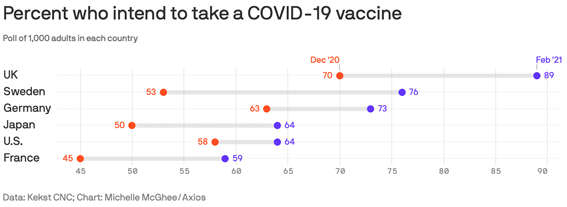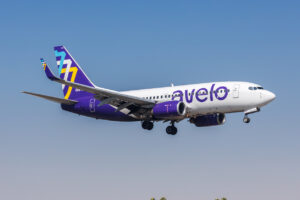Nike ties DE&I goals to exec pay, The Weeknd boycotts the Grammys, and Barbie’s Ken celebrates 60th birthday
Also: YouTube removed more than 30,000 videos with COVID-19 vaccine misinformation, Facebook tests video and ‘Stories’ ads, Society of Editors’ exec resigns, and more.
Hello, communicators:
A digital artwork file sold for a record $69.3 million at Christie’s on Thursday, suggesting that the digital nonfungible tokens, or NFTs, are quickly being embraced by the mainstream art community as treasured collectibles.
“The composite’s sale is not just a standout in the NFT world but in the broader art market, too,” reports Forbes. “It is the third-most expensive work from a living artist ever sold at auction—behind only $90.3 million spent on a David Hockney painting in 2018 and the $91.1 million for Jeff Koons’ stainless-steel Rabbit sculpture in 2019.”
While NFTs are already being embraced by the fine art world, along with popular musicians like Grimes and Kings of Leon, brands are getting in on the trend as well. Taco Bell, Twitter and other brands have already offered NFTs to consumers, which serves to remind brand managers that NFTs are worth adding to their awareness strategies.
Here are today’s top stories:
Nike sets diversity goals for 2025 that will affect executive compensation
Nike has announced a new Diversity, Equity & Inclusion strategy as part of its new Impact report, including a five-year plan to build a more diverse and inclusive workforce. Most notably, the shoemaker announced that executive compensation will hinge on hitting its benchmark goals in DE&I, environmental sustainability, ethical manufacturing and more. “We are also redefining what responsible leadership looks like,” John Donahoe, president and CEO of Nike, said in a letter addressing the five-year goals.
Nike did not offer further details on how its DE&I goals will determine executive compensation, but it did share plenty of metrics about its DE&I progress thus far.
In outlining the progress Nike made in 2020, the sneaker maker said it has increased representation of women globally across its business to 49.5%, from 48% in 2015. Representation of racial and ethnic minorities, meantime, at the vice president level in the United States increased to 29% last year, from 15.9% in 2015. Nike also highlighted the fact that its 2020 intern class was its most diverse ever, with 55% of its 310 interns being women, and 49% representing racial and ethnic minorities.
Social sentiment around the announcement was largely positive, noting what was different about Nike’s new Impact Report from other DE&I initiatives:
Specific, quantifiable goals? Ties to Executive comp? This is something!! – Nike to tie exec pay to progress in deepening diversity and helping environment https://t.co/4e3oAgppNj
— Adam Calli, MSM/SHRM-SCP (@HRNole1) March 11, 2021
Black Dollar Index was also quick to point out that Nike is taking a cue from McDonald’s in tying DE&I goals to executive compensation, while stressing the importance of measuring internal sentiment:
Nike is following in McDonald's footsteps with exec compensation tied to diversity targets. But internal SENTIMENT around inclusion will also be key to these roadmaps succeeding. https://t.co/mdMtbREe0M
— Black Dollar Index (@BlackDollarIndx) March 11, 2021
Nike has earned some bad press over the past few years regarding its alleged treatment of women athletes and BIPOC. In 2019, Nike-sponsored athlete Allyson Felix shared an opinion piece in The New York Times revealing that there was no maternity policy in place for female athletes:
[Olympian runners Alysia Montaño and Kara Goucher] told stories we athletes know are true, but have been too scared to tell publicly: If we have children, we risk pay cuts from our sponsors during pregnancy and afterward. It’s one example of a sports industry where the rules are still mostly made for and by men.
Following the report, Nike instituted a new maternity policy guaranteeing athlete pay and bonuses for 18 months around pregnancy. In the years since, the shoe brand has continued to spotlight women athletes of color in its campaigns.
Why it’s important:
Nike has long released top-tier creative content spotlighting its commitment to amplifying diverse voices and perspectives, but tying those initiatives toward tangible, measurable goals and executive compensation takes things to a whole other level. DE&I efforts (or a lack thereof) have always impacted brands’ bottom line financials, from considerations around talent retention to engagement from changing audience demographics.
By taking the lead to tether its DE&I goals to executive compensation, Nike (along with McDonald’s) sets a tangible incentive for leadership to be fundamentally invested in meeting those goals.
TACTICALLY SPEAKING
Mattel is celebrating the 60th birthday of Barbie’s friend, Ken. As a nod to the iconic doll, the Barbie brand’s Twitter and Instagram accounts posted visual and video montages celebrating Ken’s increasing diversity over the years.
60 years of laughter, fun, and the best friend under the sun. ☀️ Never far from #Barbie’s side, Ken has always made his own bold fashion statements, and he’s not slowing down anytime soon. Happy birthday Ken! #Ken60 https://t.co/zTatLzhdq8 pic.twitter.com/369Zm6WKSL
— Barbie (@Barbie) March 11, 2021
The Associated Press reported:
“Ken, much like Barbie, has always been a reflector of the times that he lives in,” said Robert Best, Barbie senior director of design at Mattel. The original, clean-cut ’60s version of Ken became much groovier over that first decade.
View this post on Instagram
SOCIAL BUZZ
Facebook is testing additional advertisement offerings on its “Stories” feature and with video content.
In a chat with The Verge, Yoav Arnstein, director of product management, says he can’t share creator or advertiser partners because the test is still in the early conceptual phase. He said the broader idea, though, is to give advertisers a natural place to fit their content, so, for example, if someone posts a video from Yosemite National Park, a sticker could advertise a local business. The contextual relevance will likely be key to making these advertisements successful, Arnstein says.
To participate, Facebook Pages must now have 600,000 minutes of viewing time across all videos (previously only videos of three minutes or longer had counted) for the last 60 days and five or more active or Live videos.
On the Live side, Arnstein wrote that Facebook is moving its in-stream advertising program out of invite-only mode, allowing creators with 60,000 minutes of Live viewing in the last 60 days to participate. And it will be investing $7 million to encourage the adoption of Stars (a virtual currency that fans can use to support creators) by offering free Stars.
Though Facebook is positioning the features as opportunities for influencers and content creators, brand managers should consider how these tools can help them better partner with influencers and reach audiences they currently don’t (or can’t) reach.
CRISIS LEADERSHIP NETWORK
Looking for more insight on how to address the current global crisis and lead your organization into a strong recovery?
Join Ragan’s Crisis Leadership Network to connect and brainstorm with peers, get the latest intelligence and research and start to strategize for the future of your organization.
Learn more about this exclusive membership here.
MEASURED THOUGHTS
Within the last six months, YouTube has removed more than 30,000 videos that make “misleading or false claims” about COVID-19 vaccines, Axios reported. Since February, the social media platform removed more than 800,000 videos that carried COVID-19 misinformation.
“Platforms are eager to share data about the volume of misinformation they catch, and that transparency is valuable,” Axios reported. “But the most valuable data would tell us the extent of misinformation that isn’t caught.”
Fighting against misinformation and disinformation isn’t only the responsibility of social media platforms. As communicators focus on reaching employees and consumers with COVID-19 safety information, policy changes and vaccination details, anti-vaccine beliefs and misinformation are two huge obstacles that you’ll have to consider as you map out your strategies and campaigns.
Axios also recently published a poll of six countries by consulting firm Kekst CNC, which revealed that though vaccine support is growing, only 25% of people in the United States believe the country won’t face another COVID-19 wave. Survey respondents in the United Kingdom, Sweden, Germany, Japan and France were more pessimistic, with 9% to 16% believing their country wouldn’t face another wave.

CRISIS COMMUNICATIONS
Ian Murray, former executive director for the U.K. Society of Editors, stepped down after backlash continued to grow over his response to Oprah Winfrey’s interview with Prince Harry and Meghan Markle. In the organization’s original response, “UK media not bigoted: SoE responds to Sussexes’ claims of racism,” Murray said it was “not acceptable” to make claims about the racism of the British press without “evidence.”
While stepping down, Murray said: “While I do not agree that the Society’s statement was in any way intended to defend racism, I accept it could have been much clearer in its condemnation of bigotry and has clearly caused upset.
“As executive director, I lead the Society and as such must take the blame and so I have decided it is best for the board and membership that I step aside so that the organization can start to rebuild its reputation,” said Murray.
Prior to Murray resigning, a high-profile presenter stepped down from hosting the organization’s awards ceremony.
ITV News presenter Charlene White pulled out of hosting the society’s annual Press Awards, saying the organization had asked her to get involved in order to improve its diversity, but failed to live up to its words.
“I only work with organizations who practice what they preach,” she said.
“Since the Black Lives Matter movement really took hold in the U.K. last year, every single institution in this country has had to finally look at its failings and its position in terms of how they treat ethnic minorities both inside and outside of its walls. But for some unknown reason, you feel as though the U.K. press is exempt in that discussion.”
If you’re putting off an audit of your organization’s efforts with diversity, equity and inclusion, you delay at your own risk. It could cost your organization important relationships, loss of trust and ultimately, your reputation.
The Weeknd announces he will boycott the Grammys after snub
In a protest against the lack of transparency surrounding the Recording Academy’s voting process for its Grammy Awards, the pop musician known as the Weeknd announced he was boycotting the organization. The Recording Academy didn’t nominate the artist for any awards for its upcoming ceremony, despite The Weeknd’s “Blinding Lights” spending 52 weeks within the Top 10 list on Billboard’s Hot 100. The artist also performed for PepsiCo’s halftime show at this year’s Super Bowl.
… For the Weeknd, the entire process has proved unacceptable. In a statement to The New York Times, he said he would boycott the awards from now on. “Because of the secret committees,” the Weeknd said, “I will no longer allow my label to submit my music to the Grammys.”
He joins a growing list of Black stars, like Drake, Kanye West and Frank Ocean, whose public rebukes of the Grammys are a threat to an institution that views itself as a supportive home for the entire music community.
Harvey Mason Jr., interim chief executive of the Recording Academy, says the institution will continue to improve itself amid mounting criticism. “We’re all disappointed when anyone is upset,” Mason replied to the Weeknd’s statement. “But I will say that we are constantly evolving. And this year, as in past years, we are going to take a hard look at how to improve our awards process, including the nomination review committees.”
Why it matters: Transparency and accountability are crucial for organizations looking for ways to commit to and implement meaningful DE&I initiatives. So far, the Recording Academy’s response has been lackluster, as a statement promising the organization is “constantly evolving” doesn’t outline what it has done to improve diversity—nor does it acknowledge the growing criticism over its secretive voting processes.
SOCIAL BUZZ
Facebook unveiled the first in what promises to be a slew of virtual reality innovations that Mark Zuckerberg hopes will allow for “teleportation” before the end of the decade.
One experimental project aims to track hand movements using nervous signals read by a wristwatch, with the hope of one day using that data to allow the wearer to manipulate virtual space.
Since Facebook bought the virtual reality company Oculus in 2014, the division has largely focused on gaming experiences, where it has enjoyed a significant share of a relatively niche market. Now, the social network is opening up about its plans for putting virtual reality and augmented reality to more mainstream uses.
Facebook has nearly 10,000 employees in its division working on augmented reality and virtual reality devices, according to a report in The Information based on internal organizational data. The number means the Reality Labs division accounts for almost a fifth of the people working at Facebook worldwide.
This suggests that Facebook has been significantly accelerating its VR and AR efforts. As UploadVR noted in 2017, the Oculus VR division accounted for over a thousand employees at a time when Facebook’s headcount was 18,770 overall, indicating a percentage somewhere north of five percent.
CONFERENCE ALERT
Social media and digital content are helping organizations across industries reach and engage with consumer and employee audiences looking to connect despite staying apart during COVID-19. The digital media landscape—and people’s behaviors—are rapidly shifting, and yesterday’s strategies won’t stand out to those searching for brands to take a stand and promote DE&I initiatives, measure their efforts, produce valuable content, and more.
Learn powerful insights and secrets from speakers at Dropbox, Chip and Joanna Gaines’ Magnolia, BET Networks, the Cleveland Cavaliers, AARP, Ketchum, LinkedIn, Oklahoma Aquarium, NAACP, Canon Europe, The Martin Agency and more.
Attendees will learn how to produce compelling social media posts and digital content across TikTok, Twitter, YouTube, Instagram, Facebook, Clubhouse and intranet channels—and glean inspiration on incorporating digital media strategies such as SEO, email marketing, paid ads and employee ambassadorship to make your efforts soar.
WHAT YOU SAID
We asked what your WFH schedule looks like as you balance crisis communications and other strategic plans, and nearly 37% of you try to keep consistent, 9-5 hours. Nearly a quarter of you confessed to working longer but taking more breaks, while nearly 40% of you said that you work all the time. If these numbers don’t make the case for a more robust work/life balance, we don’t know what will.
What's your WFH schedule look like as you balance crisis communications and other strategic plans, PR Daily readers?
Weigh in below, and we'll share the results in tomorrow's #DailyScoop.
— PR Daily (@PRDaily) March 11, 2021
Is there a question you’d like to see asked? Please let us know under the #DailyScoop hashtag!
SOUNDING BOARD
What’s your relaxation ritual after a long week, PR and communications pros?
https://twitter.com/PRDaily/status/1370366817559011331
Ease into the weekend and share a GIF that captures your state of ultimate chill. We’ll share the top answers in Monday’s #DailyScoop!








